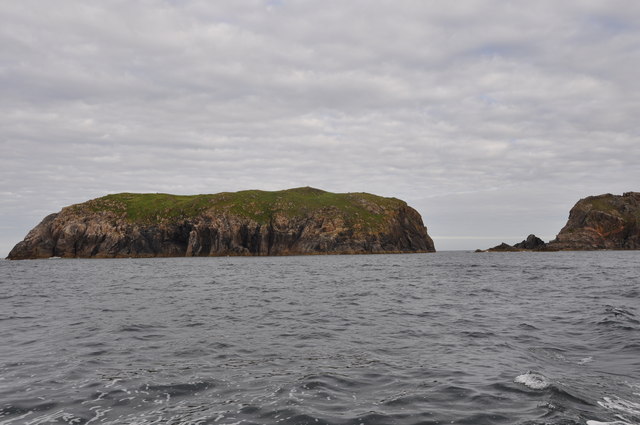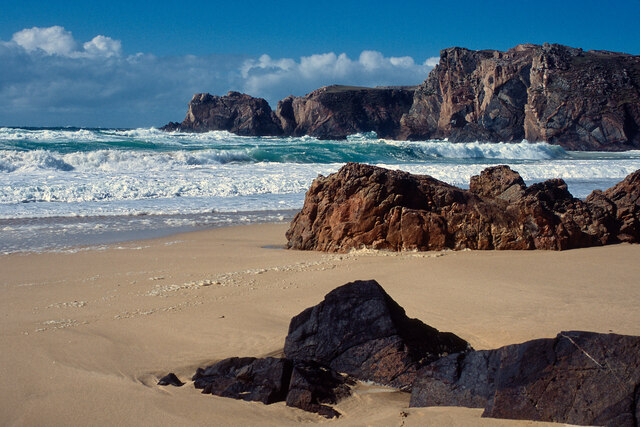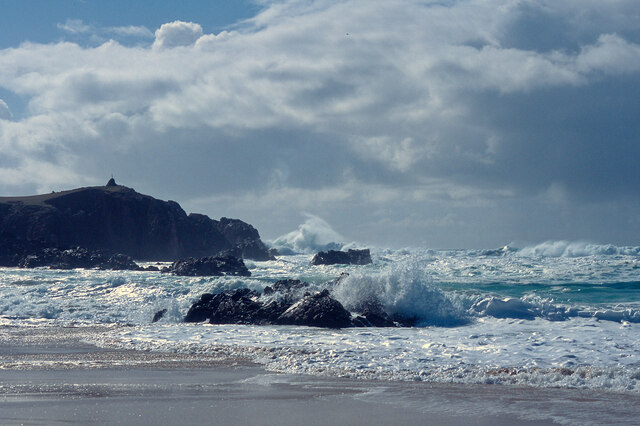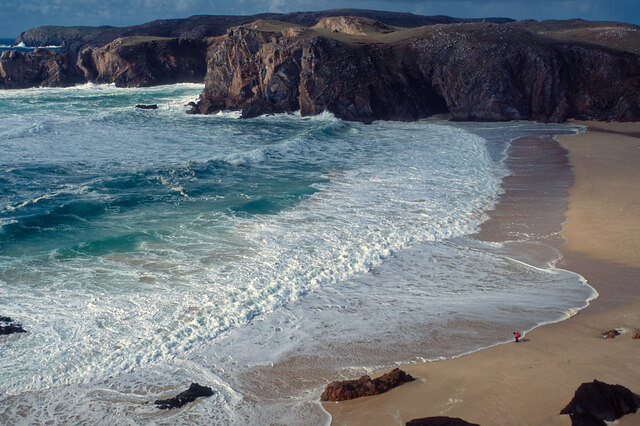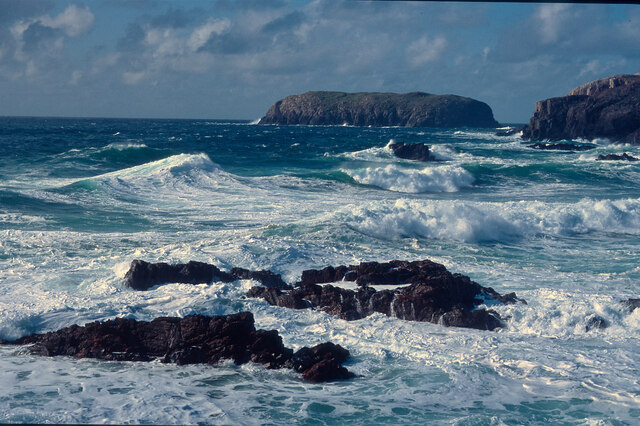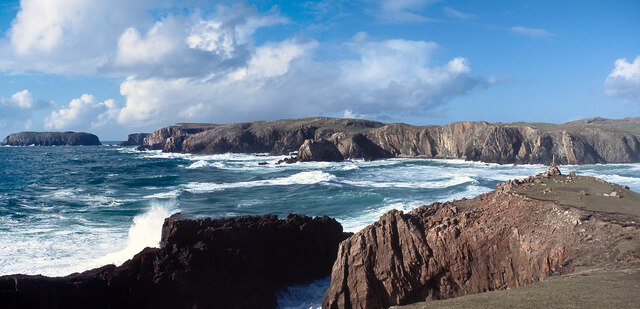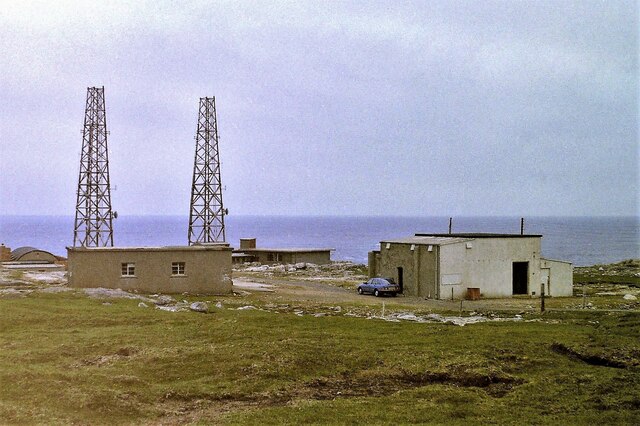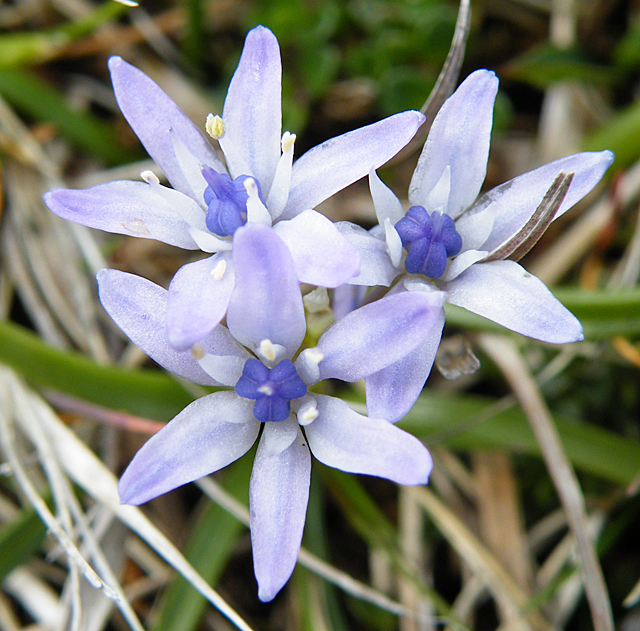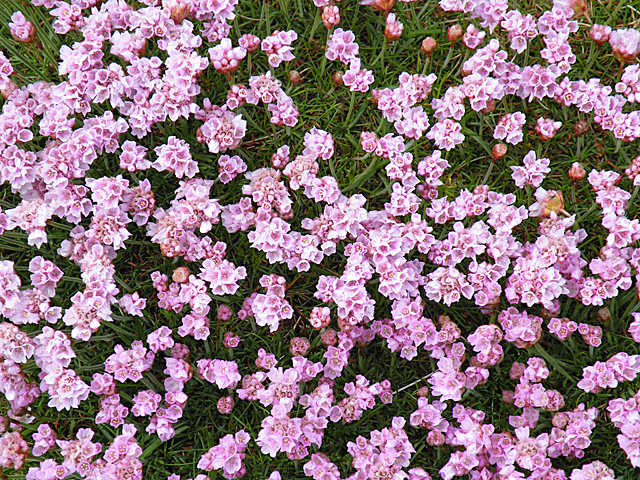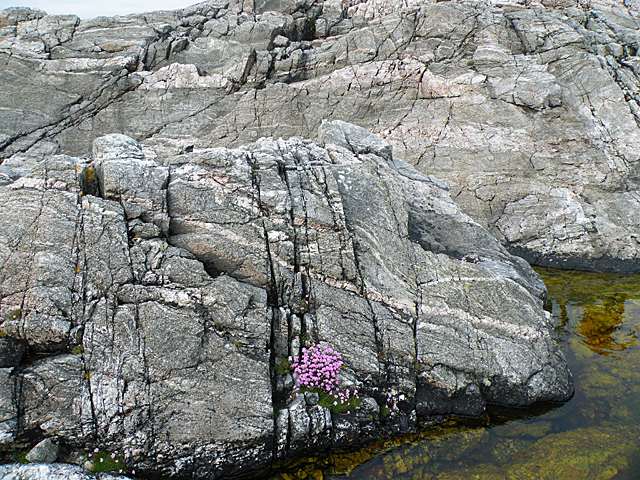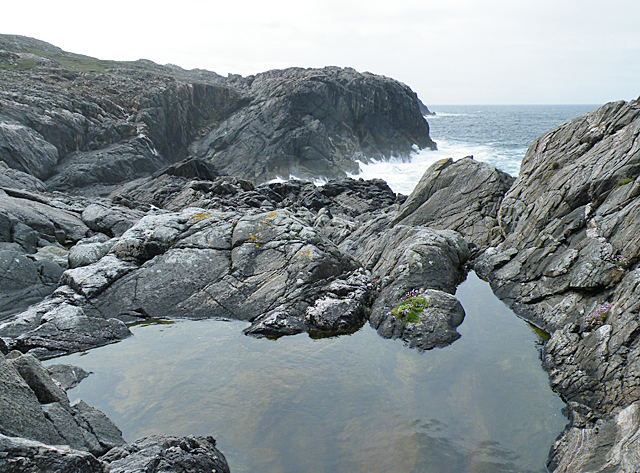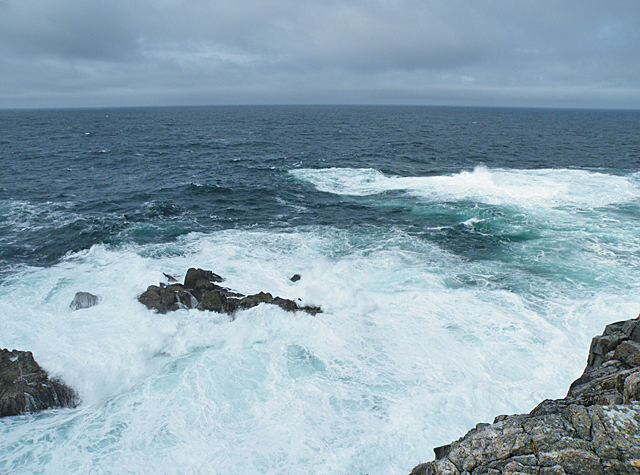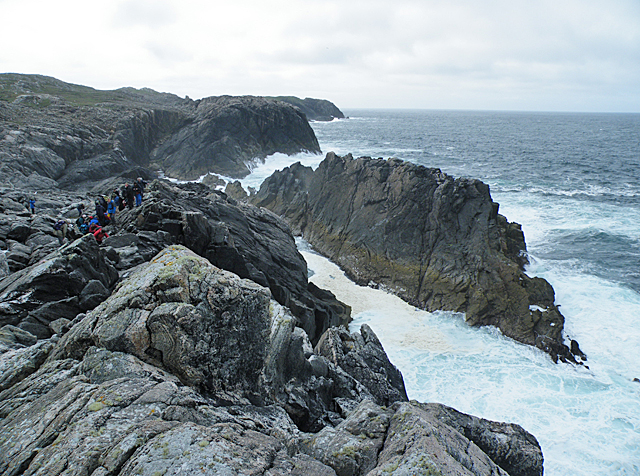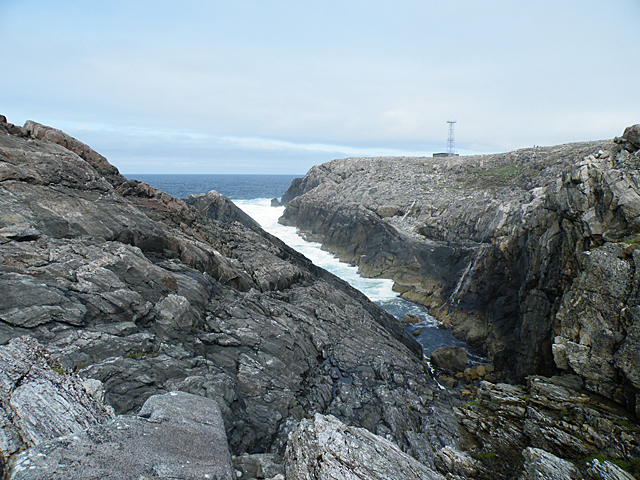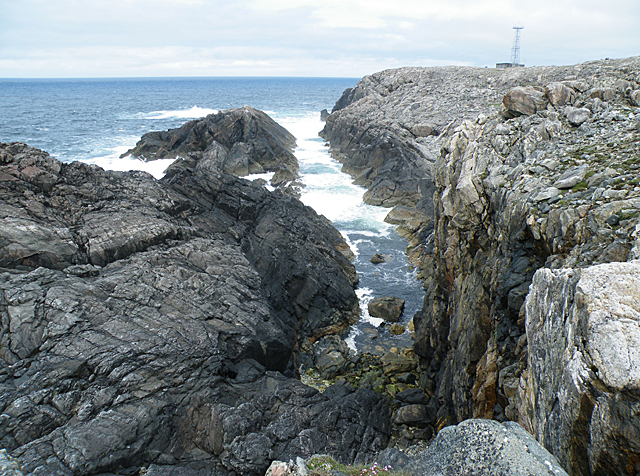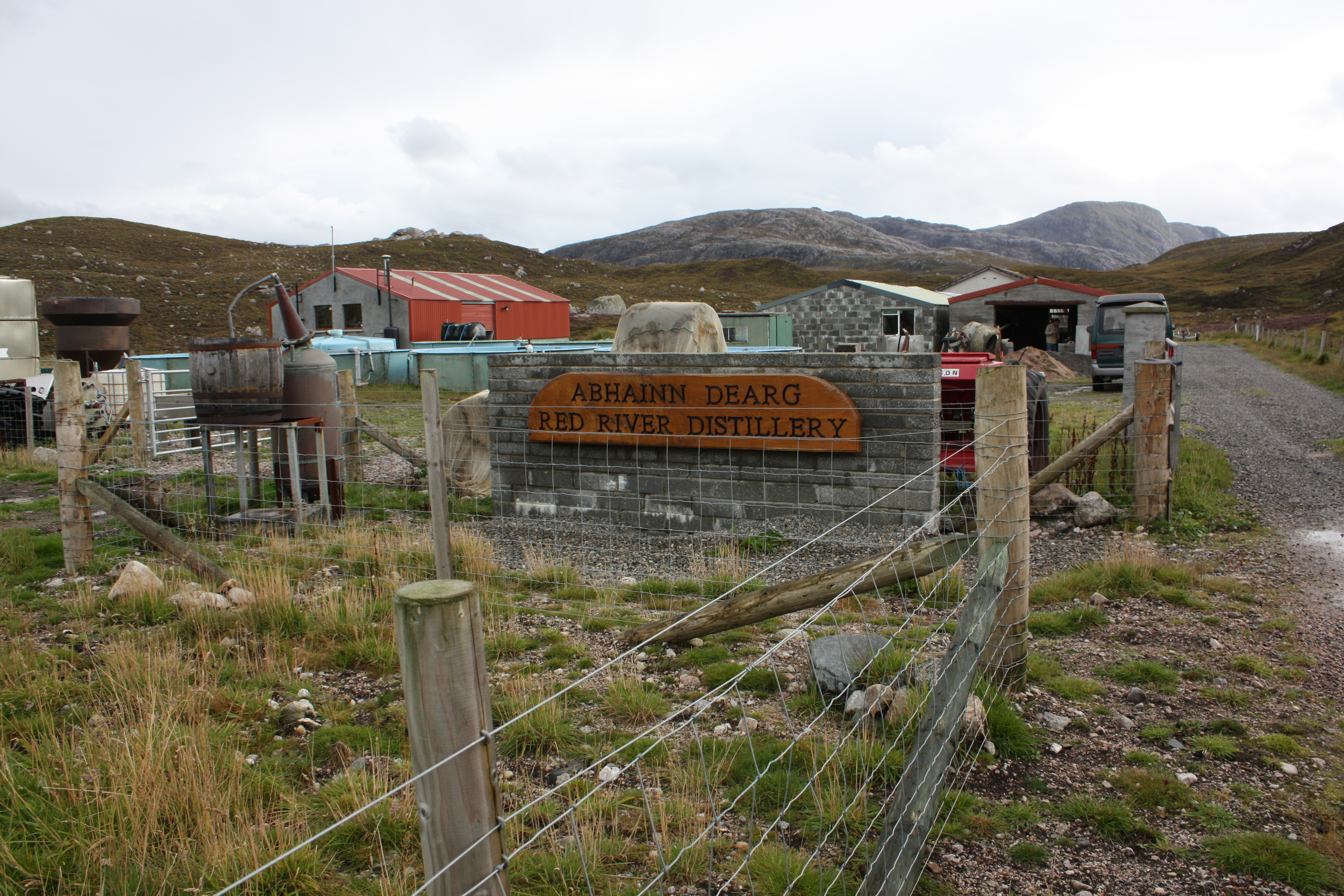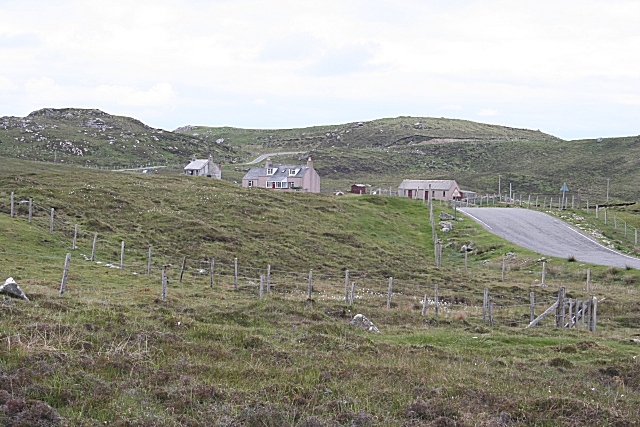Leir Geòdha
Coastal Feature, Headland, Point in Ross-shire
Scotland
Leir Geòdha
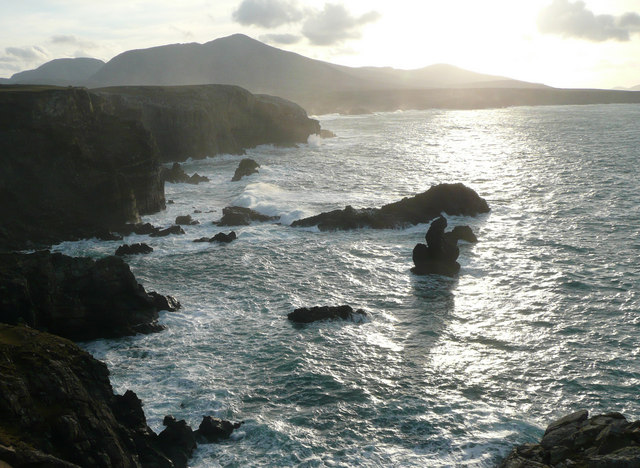
Leir Geòdha is a prominent coastal feature located in Ross-shire, Scotland. It is a headland or point that juts out into the sea, offering breathtaking views and natural beauty to visitors.
Situated on the northern coast of Scotland, Leir Geòdha is characterized by its rugged cliffs and rocky shoreline. The headland is surrounded by the vast expanse of the North Atlantic Ocean, providing a dramatic backdrop to the landscape. The area is known for its strong winds and crashing waves, creating a sense of awe and power.
Leir Geòdha is abundant in wildlife, making it a popular spot for nature enthusiasts. Seabirds such as gannets, puffins, and guillemots can be seen nesting along the cliffs, while seals and dolphins can often be spotted swimming in the surrounding waters. The headland is also home to various plant species, including hardy coastal grasses and wildflowers.
In addition to its natural wonders, Leir Geòdha has historical significance as well. The headland has remnants of ancient settlements, with archaeological sites dating back thousands of years. These sites provide valuable insights into the region's past and offer a glimpse into the lives of its early inhabitants.
Leir Geòdha is a popular destination for hikers, photographers, and those seeking a serene escape from the hustle and bustle of everyday life. Its untouched beauty and remote location make it a hidden gem for those looking to explore the untamed Scottish coastline.
If you have any feedback on the listing, please let us know in the comments section below.
Leir Geòdha Images
Images are sourced within 2km of 58.174791/-7.0996591 or Grid Reference NB0032. Thanks to Geograph Open Source API. All images are credited.
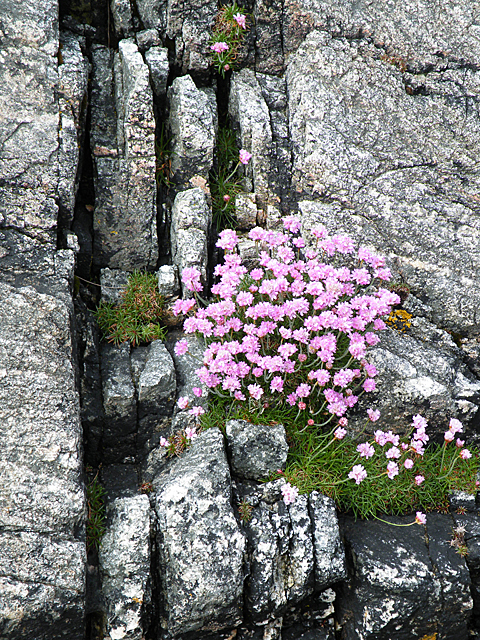
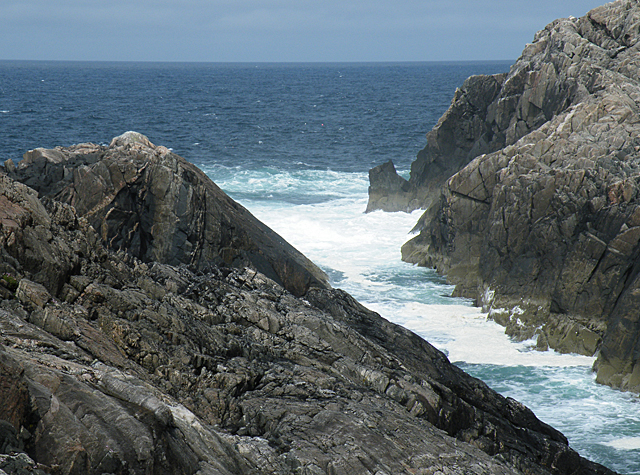
Leir Geòdha is located at Grid Ref: NB0032 (Lat: 58.174791, Lng: -7.0996591)
Unitary Authority: Na h-Eileanan an Iar
Police Authority: Highlands and Islands
What 3 Words
///takeovers.correct.file. Near Carloway, Na h-Eileanan Siar
Related Wikis
Stac Dhòmhnaill Chaim
Stac Dhòmnuill Chaim, or Stac Dhòmhnaill Chaim, or Stac Domhnuill Chaim, is a fortified promontory located near Mangursta (or Mangersta, Scottish Gaelic...
Abhainn Dearg distillery
Abhainn Dearg distillery ( AV-in JAIRG) or Red River distillery is a Scotch whisky distillery in Uig, on the west coast of the Isle of Lewis in the Outer...
Ardroil
Ardroil (Scottish Gaelic: Eadar Dhà Fhadhail) is a village on the Isle of Lewis in the Outer Hebrides, Scotland. Ardroil is within the parish of Uig....
Uig, Lewis
Uig (Scottish Gaelic: Ùig [uːkʲ]), also known as Sgìr' Ùig, is a civil parish and community in the west of the Isle of Lewis in the Outer Hebrides, Scotland...
Nearby Amenities
Located within 500m of 58.174791,-7.0996591Have you been to Leir Geòdha?
Leave your review of Leir Geòdha below (or comments, questions and feedback).
